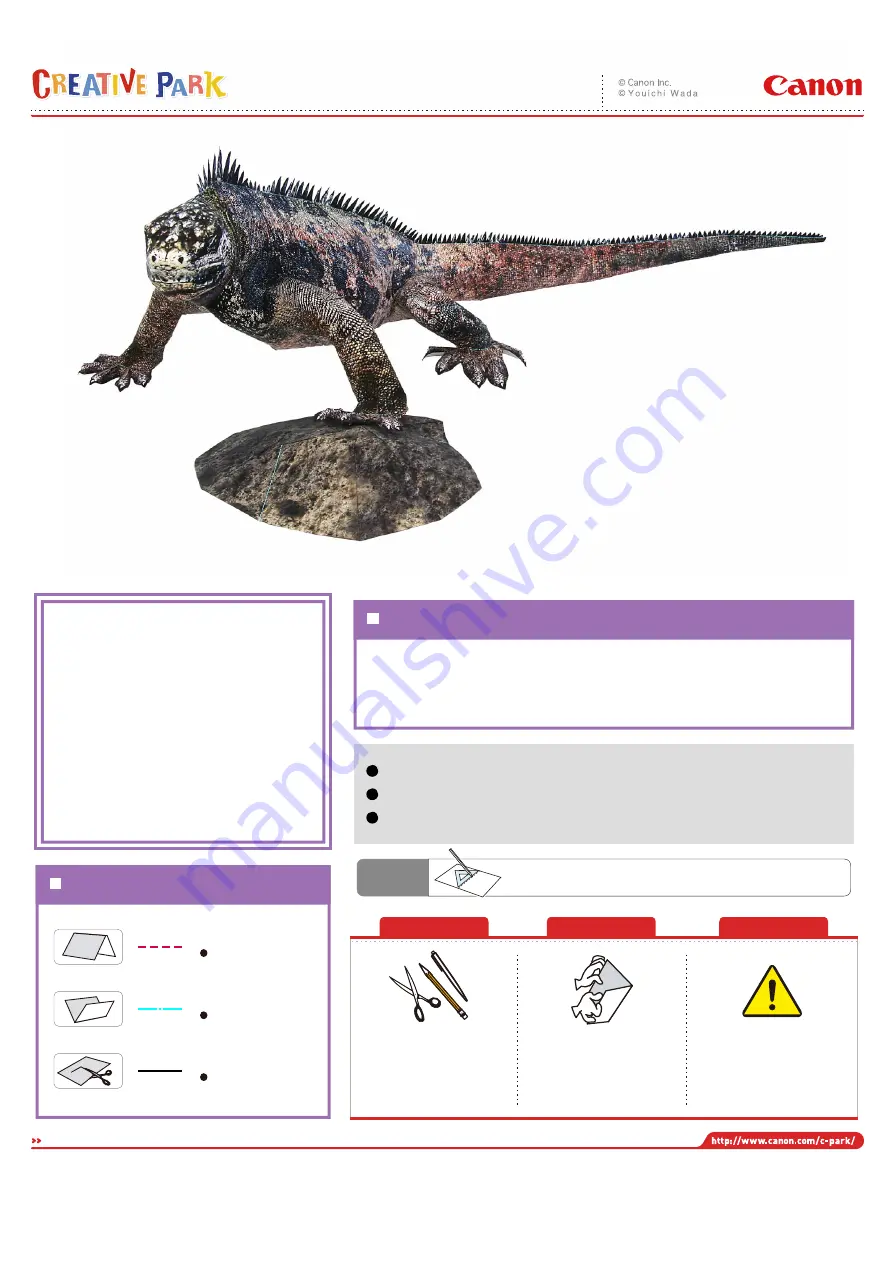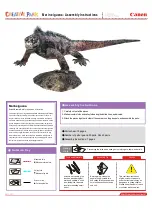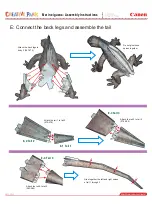
Parts sheet: 10 pages
Number of parts: Iguana 30 parts, Rock 3 parts
Assembly Instructions: 7 pages
Notation Key
Mountain fold
Make a mountain fold.
Scissors line
Cut along the line.
Valley fold
Make a valley fold.
Assembly Instructions
1: Carefully cut out all the pieces.
2: Make mountain folds and valley folds along the dotted lines, as indicated.
3: Attach the pieces together in order of the numbers on the glue spots, and assemble the parts.
PAGE01
Marine iguana: Assembly Instructions
Marine iguana
Scientific name:
Amblyrhynchus cristatus
The marine iguana is a large reptile distributed in the Galapagos Islands,
a part of Ecuador, South America. Its body reaches 120 to 150 cm in
length. It feeds mainly on seaweed, meaning it is suited to the ocean, a
trait which makes the marine iguana unique from other lizards. A marine
iguana will bask in the sun for a long time to raise its body temperature
enough, before entering the sea. Its laterally flattened tail is well-suited to
swimming, and it has glands near its nose to expel excess salt ingested
from the sea water. On its head are rough bumps, and on its neck and
back is a row of spine-like scales, known as a crest. All four of its legs
feature sharp claws, which have evolved to allow the marine iguana to
cling firmly to rocks in the ocean and feed on the marine plants, even in
the rapid currents found around the Galapagos Islands.
Scissors, set square, glue
(such as woodwork glue),
metal rod, spatula, a used
pen, toothpicks, tweezers
(useful for handling small
parts).
Before gluing, crease the
paper along mountain fold
and valley fold lines and make
sure rouned sections are nice
and stiff.
This craft requires the use
of glue, scissors, tweezers,
and other tools which may be
dangerous to young children.
Please keep them out of reach
of children while you work.
Tools and Materials
Assembly Tip
Caution
Trace along the folds with a used pen (no-ink) to get a sharp, easier fold.
Handy
Hints
























